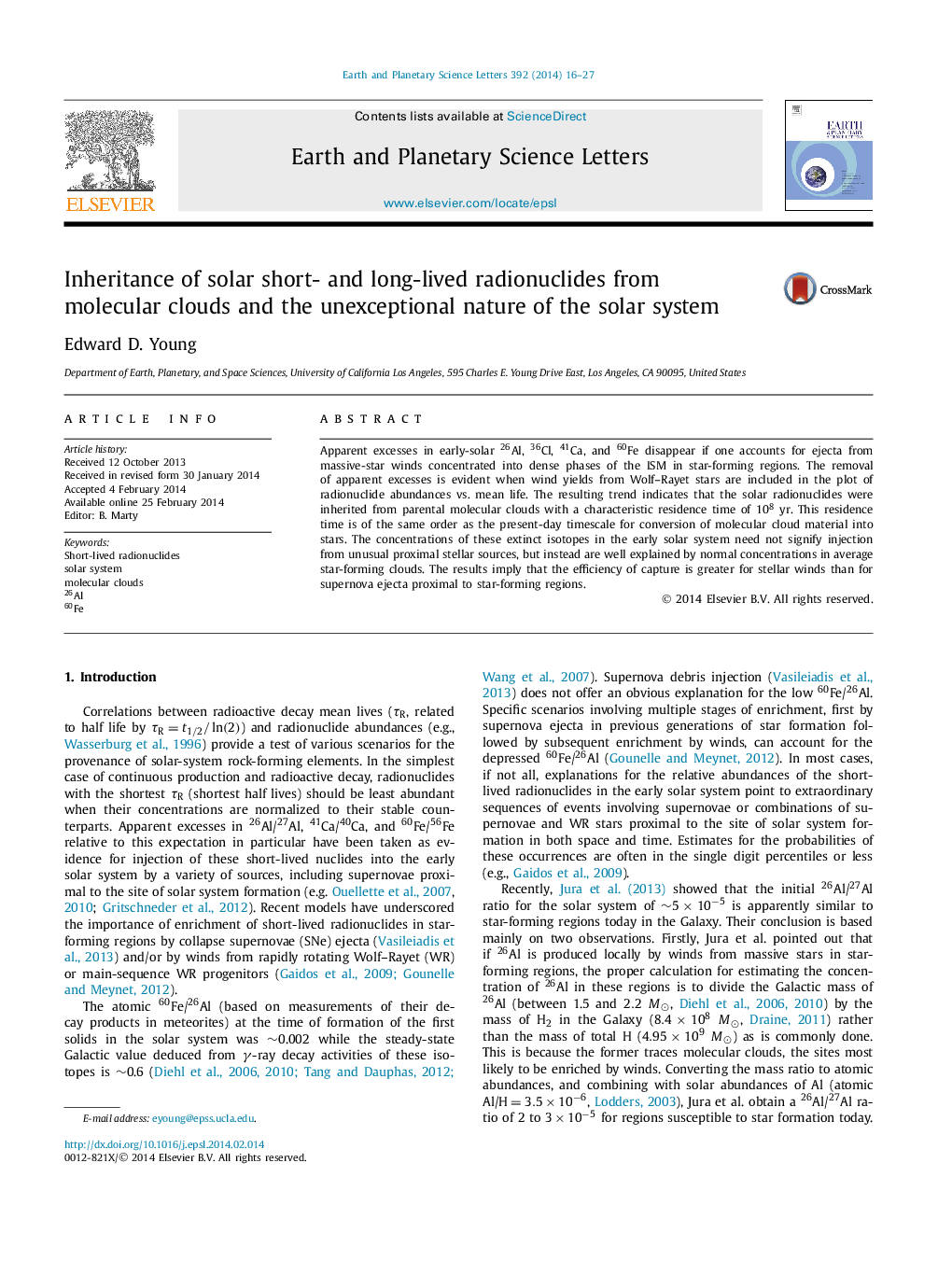| کد مقاله | کد نشریه | سال انتشار | مقاله انگلیسی | نسخه تمام متن |
|---|---|---|---|---|
| 6429471 | 1634764 | 2014 | 12 صفحه PDF | دانلود رایگان |
- Apparent excesses in early-solar short-lived radionuclides are from stellar winds.
- The solar parental molecular cloud had a characteristic residence time of 108 yr.
- Concentrations of radionuclides in the early solar system are typical.
Apparent excesses in early-solar 26Al, 36Cl, 41Ca, and 60Fe disappear if one accounts for ejecta from massive-star winds concentrated into dense phases of the ISM in star-forming regions. The removal of apparent excesses is evident when wind yields from Wolf-Rayet stars are included in the plot of radionuclide abundances vs. mean life. The resulting trend indicates that the solar radionuclides were inherited from parental molecular clouds with a characteristic residence time of 108 yr. This residence time is of the same order as the present-day timescale for conversion of molecular cloud material into stars. The concentrations of these extinct isotopes in the early solar system need not signify injection from unusual proximal stellar sources, but instead are well explained by normal concentrations in average star-forming clouds. The results imply that the efficiency of capture is greater for stellar winds than for supernova ejecta proximal to star-forming regions.
Journal: Earth and Planetary Science Letters - Volume 392, 15 April 2014, Pages 16-27
